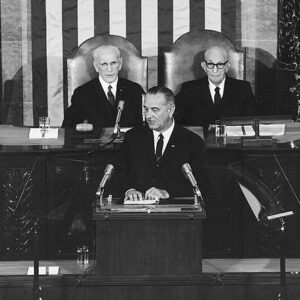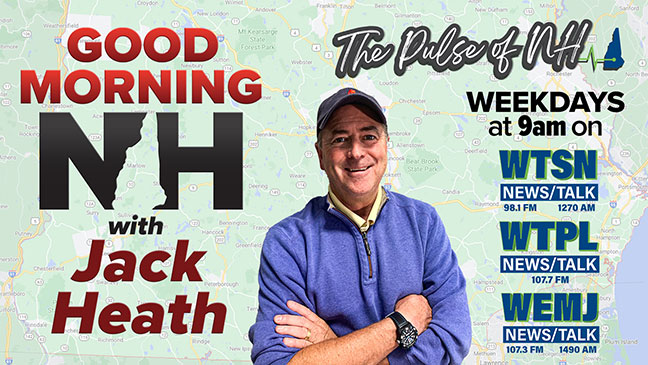The eyes of the nation will soon be glued to the U.S. House chamber once more for America’s annual spectacle: the State of the Union address. It’s a moment of high drama, a democratic version of European pomp and ceremony.
Congress, some of the Supreme Court and most of the Cabinet are all assembled in one room. The House sergeant at arms calls out, “Mister Speaker, the President of the United States!” There is an explosion of applause so powerful it nearly registers on radar.
And just like other big TV ratings events, the State of the Union address generally draws a lot of eyeballs during TV’s choicest viewing slot, too.
In fact, that nationally televised address is among the biggest perks of the presidency. For one magical night yearly, a stuffy speech transforms into Must See TV.
It wasn’t always that way.
The relatively few Americans who owned televisions were glued to them at 1 p.m. on Monday, Jan. 6, 1947. They knew they were witnessing a first. In a grainy black-and-white transmission that looked like it was beamed from Mars, a short man with thick glasses walked up to a rostrum, shook hands, and then turned to the camera.
Americans were thrilled. This was the first time they could watch a State of the Union address as it was being delivered. True, they had followed it on the radio for more than 20 years. As this new medium was quickly proving, folks would rather see and hear than just listen to a broadcast. They watched in rapt attention as President Harry Truman delivered a long address right before their very eyes.
(There was another first that year; 1947 was also the first time the speech was officially called the State of the Union Address. Franklin Roosevelt began calling it by the name we now know starting in 1935. Before that, it was simply called the president’s “Annual Message.”)
Harry’s big talk was a big hit. And so, for the next two decades soap operas and game shows were interrupted one afternoon every January for the State of the Union.
Then Lyndon Johnson changed things again.
LBJ was a big man, and (not surprising for a politician hailing from Texas, where everything is bigger) he liked doing things in a big way. Puny daytime TV viewership when most Americans were working wasn’t good enough for him. Johnson wanted a big audience. That meant prime time. Starting in 1966, the address was moved to the evening.
Which then led to the televised response from the opposing party. In fact, future president Gerald Ford helped give the GOP’s first-ever State of the Union response.
Now on a programming equal footing with the likes of “All In the Family,” “Bonanza” and “Laugh-In,” the event kept evolving.
More people watching at home meant more applause with a louder volume inside the Capitol. By the early 1980s, Republicans were putting their hands together for President Ronald Reagan with such precision that Democratic Congressman Dennis Eckart wondered what was going on. He peeked at an advance copy of the speech that had been given to his Republican colleagues. It specified lines where GOP members were encouraged to applaud. Outraged Democrats, from Speaker Tip O’Neill on down, stayed silent throughout much of the following year’s address in protest, giving little more than golf claps.
Team Reagan also began the tradition of inviting everyday Americans to attend the speech, starting in 1982. A man named Lenny Skutnik was hailed for having jumped into the icy Potomac River a few weeks earlier to save a woman after an Air Florida plane crash. It proved such a hit that presidents have been doing it ever since.
The address keeps up with the latest technology, too. It was first streamed live on the internet in 1997. The first high-def broadcast came in 2004.
For millions of Americans, watching the State of the Union address is as much a wintertime tradition as watching the Super Bowl.
Though the speech’s audience is significantly smaller. Makes you wonder if a future administration will add a halftime show one day to gin up the ratings.





